Adverb of TimeThe adverb of time is an adverb (like soon or tomorrow) that specifies when a verb's action occurs. It is also called the temporal adverb. An adverb phrase that addresses the issue "when?" is termed a temporal adverbial. 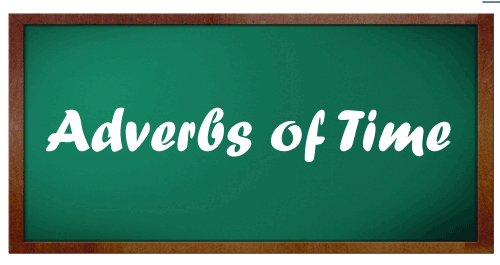
Adverb of time informs us when an action occurred, how long it lasted, and how frequently it occurred. Time adverbs are unchangeable. They are incredibly common in the English language. Adverbs of time usually have conventional placement in a phrase based on what the adverb of time informs us. Adverbs of time are adverbs that affect or define the meanings of a phrase by informing us when things occur. An adverb of time is exactly what it sounds like: a word that defines when, how long, or how frequently a given activity occurred. Several adverbs of time and adverbs of frequency are interchangeable. There is a lot of similarity amongst these kinds of adverb, so much that some of the educators only discuss one or the other. 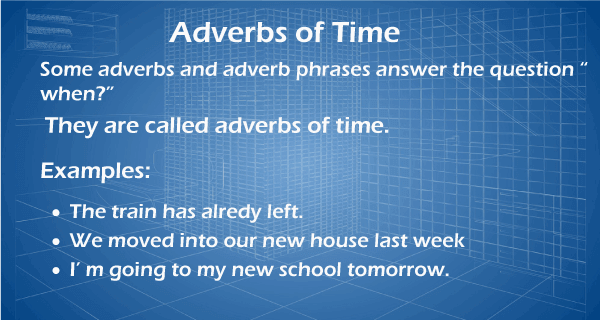
These simple principles for time adverbs will assist you in utilizing them correctly: Adverbs of time are most effective when used at the ending of the statements. As an example:
You can vary the position of a temporal adverb to emphasize a particular component of a statement. 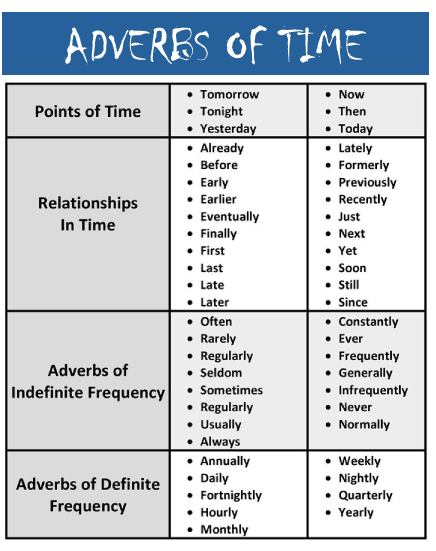
As an example:
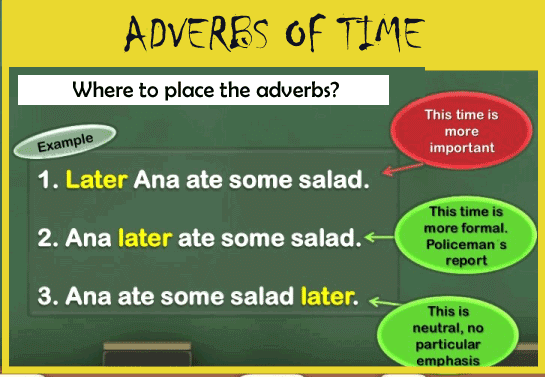
Adverbs of time, which describe how long an action lasted, are most effective near the sentence's ending. As an example:
Adverbs of time that convey the exact amount of times an action occurs are usually most effective near the end of a phrase. As an example:
When employing multiple adverb of time in a statement, include them in the following manner:
As an instance: Helen participated at the clinic (1) for five days (2) every week (3) last year. Adverb of Time ExamplesEach statement contains an instance of a time adverb, which is italicized for easy identification.
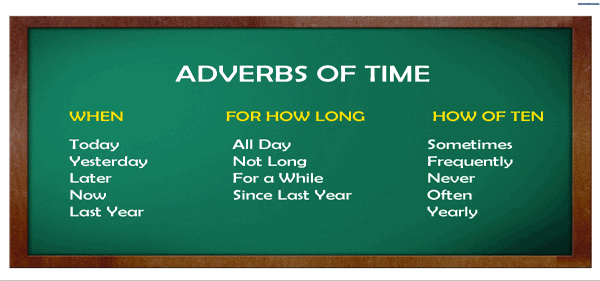
Adverbs of time that indicate whenWhen adverbs are used, they are usually positioned at the ending of a sentence. Examples;
Placing an adverb that informs us when at the conclusion of a statement is a neutral state, but these adverbs can also be placed in other positions to emphasize other points. To emphasize the time factor, all adverb which inform us when could be positioned at the start of a statement. Certain can also be used before the primary verb in formal contexts, whereas others cannot. Instances
Adverb of time that informs us how longAdverbs that inform us for how long are also typically positioned at the ending of the sentence. Instances
These adverbial phrases that inform us how long something will last, for it has always been accompanied by a duration expression, whereas since is always accompanied by a time expression. Some instances of this kind of adverb of time are;
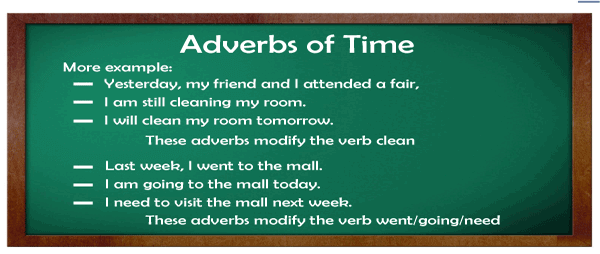
Adverb of time that informs us how oftenAdverbs that describe the frequency of action are known as frequency adverbs. These are typically used prior to the primary verb but mostly after auxiliary verb (like as be, have, may, & must). Whenever the primary verb is "to be," the exception is whenever the adverb comes after the primary verb. Instances of this type of adverb of time are as follow;
Several adverbs that convey frequency can be inserted at the start or end of a statement, but some cannot. The adverb's meaning is significantly more powerful when it is used in these different situations. Adverbs can often be employed in two places;
Some adverbs that inform us how frequently convey the precise number of times an action occurs or occurred. These adverbs are typically used at the ending of sentences. Examples of this type of adverb of time are
Using "yet"Yet is often used in queries and in negative statements to imply that something that has not occurred or may not have occurred but is suppose to happen. It is positioned at the ending of the sentence or immediately after the term "not". Instances of this type of adverb of time are
Using the word "still" shows continuityIt comes before the primary verb and after auxiliary verbs like be, have, might, and will in affirmative sentences. If the primary or the main verb is to be, use still following (post) it, not before it. In queries, it continues to come prior to the main verb. Instances of this kind of adverb of time are;
Adverb of Time in orderIf you require to utilize more than one-time adverb in a statement, do so. 1: how long 2: how frequently 3: whenInstances are as follow; 1 + 2: I perform (1) for 6 hours (2) each day 2 + 3: The journal was authored (2) weekly (3) last year. 1 + 3: I was overseas (1) for 12 weeks (3) last year. 1 + 2 + 3: Helen worked in healthcare (1) for three days (2) weekly (3) the year before. 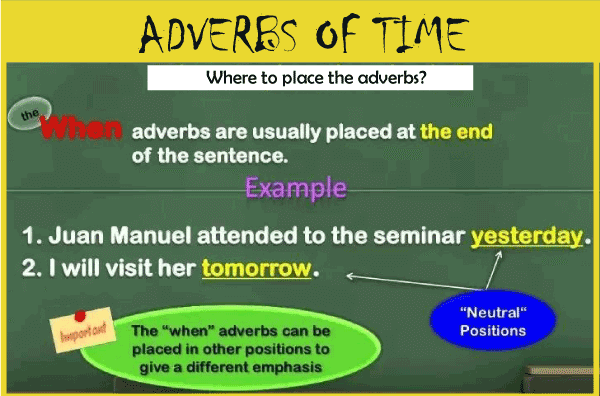
What is the ideal way to recognize an adverb in a statement?Adverbs are terms which describe the verbs, the adjectives, or even an entire sentence. Adverbs frequently finish in -ly, but others look exactly like their adjective versions. Is 'quickly' an adverb of time?'Quick' is the adjective, whereas the term 'quickly' is the adverb. It can be used as a temporal adverb in sentences like 'as soon as feasible.' She reached to the shop as quickly as she could. This is a time adverb that informs us when something occurred. In this situation, it indicates that it occurred promptly. Several applications: Using more than one-time adverb in a sentenceIt is possible to utilize more than one-time adverb in a single statement. As an example, we have highlighted the adverbs used in the sentence for ease of recognition.
Thus, this concludes our lesson on adverb of time. With practice and regular usage, one can have a better grasp of the subject and its usage.
Next TopicAdverb Exercises
|
 For Videos Join Our Youtube Channel: Join Now
For Videos Join Our Youtube Channel: Join Now
Feedback
- Send your Feedback to [email protected]
Help Others, Please Share










